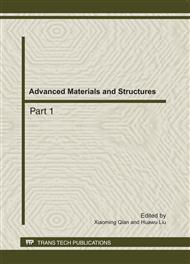[1]
Endo M, Kim C, Nishimura K, Fujino T, Miyashita K. Recent development of carbon materials for Li ion batteries[J]. Carbon, 2000,38: 183-197.
DOI: 10.1016/s0008-6223(99)00141-4
Google Scholar
[2]
Hua-jun Guo, Xin-hai Li, Zhi-xing Wang, et al. Effect of lithium or aluminum substitution on the characteristics[J]. Rare Metals, 2003, 22(4): 280-284.
Google Scholar
[3]
Wu Y P, Rahm E, Holze R. Carbon anode materials for lithium ion batteries[J]. Journal of Power Sources, 2003, 114: 228-236.
DOI: 10.1016/s0378-7753(02)00596-7
Google Scholar
[4]
Jin-cai Wang, Feng Li, Chang Liu, Hong-xi Li. Research and Development of carbon cathode materials for lithium-ion battery[J]. Corrosion Science and Protection Technology, 2004, 16(5): 300-303.
Google Scholar
[5]
Bao Zhang, Hua-jun Guo, Xin-hai Li, Zhi-Xing Wang, Wen-jie Peng. Structure, characteristics and electrochemical properties of the carbon cathode materials for lithium-ion battery[J]. Journal of Central South University(Natural Science), 2007, 138(3): 454-459.
Google Scholar
[6]
Rongjun Ma. Research and application of lithium ion battery anode materials [J]. Nonferrous Metals, 2008, 60(2):38-45.
Google Scholar
[7]
Jing-Hong Li. Advanced battery materials[M]. Chemical Industry Press, 2004.
Google Scholar
[8]
Hua-bin Pi, Chuan-xin Wang, Jianhua Wang, Xuemei Wu. Present and prospect of lithium-sulfur battery [J]. Battery, 2009,39(2):113-115.
Google Scholar
[9]
Xiulei Ji, Kyu Tae Lee, Linda F. Nazar. A highly ordered nanostructured carbon–sulphur cathode for lithium–sulphur batteries[J]. Nature Materials, 2009, (8)500-506.
DOI: 10.1038/nmat2460
Google Scholar
[10]
Yingjun Cai, Wei-kun Wang, Jing-Mao Zhao, Zhong-Bao Yu, An-Bang Wang. Study on carbyne polysulfide as cathode material for rechargeable lithium batteries[J]. Chemical Technology, 2008,16(3):1-4.
Google Scholar
[11]
Feng Wu, Sheng-xianWu, Renjie Chen, Shi Chen, Guoqing Wang. Study on preparation and electrochemical behavior of sulfur carbon composites as cathode materials for lithium sulfur battery[J]. Beijing University of Technology, 2009, 29(8): 737-740.
Google Scholar


